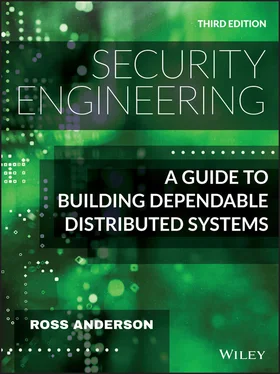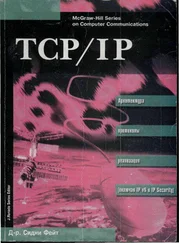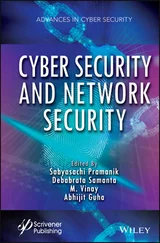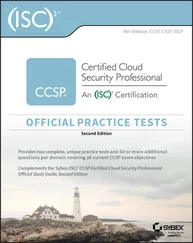Bugs in browsers are exploited in drive-by download attacks, where visiting an attack web page can infect your machine, and even without this the modern web environment is extremely difficult to control. Many web pages are full of trackers and other bad things, supplied by multiple ad networks and data brokers, which make a mockery of the intent behind the same-origin policy. Malicious actors can even use web services to launder origin: for example, the attacker makes a mash-up of the target site plus some evil scripts of his own, and then gets the victim to view it through a proxy such as Google Translate. A prudent person will go to their bank website by typing in the URL directly, or using a bookmark; unfortunately, the marketing industry trains everyone to click on links in emails.
The late 1990s saw the emergence of yet another type of access control: the software sandbox , introduced by Sun with its Java programming language. The model is that a user wants to run some code that she has downloaded as an applet, but is concerned that the applet might do something nasty, such as stealing her address book and mailing it off to a marketing company, or just hogging the CPU and running down the battery.
The designers of Java tackled this problem by providing a ‘sandbox’ – a restricted environment in which the code has no access to the local hard disk (or at most only temporary access to a restricted directory), and is only allowed to communicate with the host it came from (the same-origin policy ). This is enforced by having the code executed by an interpreter – the Java Virtual Machine (JVM) – with only limited access rights [784]. This idea was adapted to JavaScript, the main scripting language used in web pages, though it's actually a different language; and other active content too. A version of Java is also used on smartcards so they can support applets written by different firms.
Virtualisation is what powers cloud computing; it enables a single machine to emulate a number of machines independently, so that you can rent a virtual machine (VM) in a data centre for a few tens of dollars a month rather than having to pay maybe a hundred for a whole server. Virtualisation was invented in the 1960s by IBM [496]; a single machine could be partitioned using VM/370 into multiple virtual machines. Initially this was about enabling a new mainframe to run legacy apps from several old machine architectures; it soon became normal for a company that bought two computers to use one for its production environment and the other as a series of logically separate machines for development, testing, and minor applications. It's not enough to run a virtual machine monitor (VMM) on top of a host operating system, and then run other operating systems on top; you have to deal with sensitive instructions that reveal processor state such as absolute addresses and the processor clock. Working VMMs appeared for Intel platforms with VMware ESX Server in 2003 and (especially) Xen in 2003, which accounted for resource usage well enough to enable AWS and the cloud computing revolution. Things can be done more cleanly with processor support, which Intel has provided since 2006 with VT-x, and whose details I'll discuss below. VM security claims rest to some extent on the argument that a VMM hypervisor's code can be much smaller than an operating system and thus easier to code-review and secure; whether there are actually fewer vulnerabilities is of course an empirical question [1578].
At the client end, virtualisation allows people to run a guest operating system on top of a host (for example, Windows on top of macOS), which offers not just flexibility but the prospect of better containment. For example, an employee might have two copies of Windows running on their laptop – a locked-down version with the office environment, and another for use at home. Samsung offers Knox, which creates a virtual machine on a mobile phone that an employer can lock down and manage remotely, while the user enjoys a normal Android as well on the same device.
But using virtualisation to separate security domains on clients is harder than it looks. People need to share data between multiple VMs and if they use ad-hoc mechanisms, such as USB sticks and webmail accounts, this undermines the separation. Safe data sharing is far from trivial. For example, Bromium 5offers VMs tailored to specific apps on corporate PCs, so you have one VM for Office, one for Acrobat reader, one for your browser and so on. This enables firms to work reasonably securely with old, unsupported software. So how do you download an Office document? Well, the browser exports the file from its VM to the host hard disc, marking it ‘untrusted’, so when the user tries to open it they're given a new VM with that document plus Office and nothing else. When they then email this untrusted document, there's an Outlook plugin that stops it being rendered in the ‘sent mail’ pane. Things get even more horrible with network services integrated into apps; the rules on what sites can access which cookies are complicated, and it's hard to deal with single signon and workflows that cross multiple domains. The clipboard also needs a lot more rules to control it. Many of the rules change from time to time, and are heuristics rather than hard, verifiable access logic. In short, using VMs for separation at the client requires deep integration with the OS and apps if it's to appear transparent to the user, and there are plenty of tradeoffs made between security and usability. In effect, you're retrofitting virtualisation on to an existing OS and apps that were not built for it.
Containers have been the hot new topic in the late 2010s. They evolved as a lightweight alternative to virtualisation in cloud computing and are often confused with it, especially by the marketing people. My definition is that while a VM has a complete operating system, insulated from the hardware by a hypervisor, a container is an isolated guest process that shares a kernel with other containers. Container implementations separate groups of processes by virtualising a subset of operating-system mechanisms, including process identifiers, interprocess communication, and namespaces; they also use techniques such as sandboxing and system call filtering. The business incentive is to minimise the guests' size, their interaction complexity and the costs of managing them, so they are deployed along with orchestration tools. Like any other new technology, there are many startups with more enthusiasm than experience. A 2019 survey by Jerry Gamblin disclosed that of the top 1000 containers available to developers on Docker Hub, 194 were setting up blank root passwords [743]. If you're going to use cloud systems, you need to pay serious attention to your choice of tools, and also learn yet another set of access control mechanisms – those offered by the service provider, such as the Amazon AWS Identity and Access Management (IAM). This adds another layer of complexity, which people can get wrong. For example, in 2019 a security firm providing biometric identification services to banks and the police left its entire database unprotected; two researchers found it using Elasticsearch and discovered millions of people's photos, fingerprints, passwords and security clearance levels on a database that they could not only read but write [1867].
But even if you tie down a cloud system properly, there are hardware limits on what the separation mechanisms can achieve. In 2018, two classes of powerful side-channel attacks were published: Meltdown and Spectre, which I discuss in the following section and at greater length in the chapter on side channels. Those banks that use containers to deploy payment processing rely, at least implicitly, on their containers being difficult to target in a cloud the size of Amazon's or Google's. For a comprehensive survey of the evolution of virtualisation and containers, see Randal [1578].
Читать дальше











